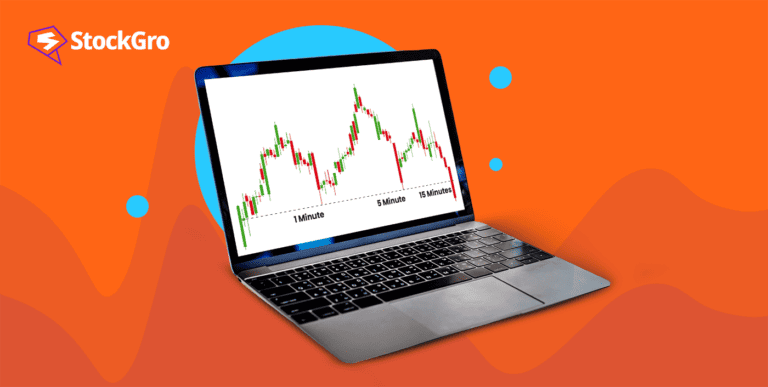
As a financial market investor, you have probably heard of various trading styles and tactics that help traders make money in the markets. One such tactic is positional trading.
Positional trading is a strategy for stock market enthusiasts who aren’t interested in long-term investing and can’t keep up with the daily volatility. The strategy’s primary objective is to maintain the position through medium- to long-term stock market price fluctuations.
That said, let’s explore the concept of position trading and discuss various position trading strategies.
What is an open position in trading?
Before jumping into positional trading and its various strategies, we must understand what open and closed positions are in trading.
In investing, a position is considered open if a trade has been placed or formed but the opposing transaction has not yet closed. It is possible to have an open position after buying, selling, going long, or going short. Either way, the position is open until someone makes a countertrade.
Also read: Risk management in stock market
What is a close position in trading?
When a trader closes a position, the trade is no longer open. You need to trade against the direction you started to close a position.
If you decide to take a long position in a stock, for example, you will need to sell the same units of shares to cover your position. You cannot reopen a position after it has been closed. You will see an adjustment to your account balance reflecting the realisation of any profit or loss at the moment of closure.
What is positional trading?
People who engage in positional trading often keep their positions open for a long time, even years. Rather than concentrating on temporary swings, the approach aims to profit from long-term market patterns.
One of the most common examples of positional trading involves holding onto your stake and selling it when the value grows. Positional traders are traders who use position trading approaches.
With the help of position sizing in trading (a trader’s total units held in a certain investment), investors may evaluate the total number of share units that are safe to buy to mitigate risk and make significant profits.
They calculate their position size based on the various risks associated with it, like trade risk and stop-loss level. In addition to tracking the market’s overall movement, investors evaluate assets based on technical and fundamental analysis.
The idea behind position trading is to purchase and hold stocks based on a trend that has the potential to take off; once the trend reaches its peak and the industry is experiencing significant growth, the stocks are sold off to generate profits.
Also read: How does intraday trading work?
Top 3 position trading strategies
Positional trading may appear straightforward, but it involves a thorough grasp of the markets and extensive fundamental and technical analysis.
Three fundamental methods for positional trading are:
- Support and resistance trading
Traders can see the range within which the value of an asset fluctuates by using support and resistance lines. Support and resistance set a lower limit and an upper limit for price, respectively.
By following these steps, you can find out where an asset’s price might be at these levels.
- Looking at historical data is one dependable way to find an asset’s support and resistance levels. Traders use time frames when there are significant profits and losses as predictors of future market moves.
- A breakout results in a shift in the roles of resistance and support. Traders leverage the historical data regarding support and resistance levels to assess whether the value of an asset has changed.
- Additionally, Fibonacci Retracement provides a helpful tool for comprehending dynamic support and resistance phases.
- Breakout trading strategy
The goal of breakout trading is to try to open a position when a trend is emerging. Generally, trading large-scale market movements is built around a breakout approach.
Traders using the breakout trading method watch for the price line to cross the resistance or support level. Opening a long position might be a good idea when the above resistance is breached.
On the flip side, if the price crosses the support line, the trader goes into a short position. This trading approach will be lucrative if traders can identify periods of support and resistance.
- 50-day moving average trading
Among the most vital indicators in positional trading is the 50-day moving average indicator. The moving averages 100 and 200, which show significant long-term trends, both have a factor of 50.
The 50-day moving average indicator is a helpful tool for positional traders since it may signal the beginning of an emerging long-term trend if it coincides with the 100 and 200-day moving average indicators. When employing this position trading strategy, the stop-loss is usually placed right below the latest price drop.
Also read: How does arbitrage trading work?
What is the best time frame for positional trading?
Being a positional trader means using several time frames to profit from your trading. The most popular time frames for positional trading to enter a trade are 60-minute, daily, and weekly charts. Identifying the stock’s price trend on the weekly chart is essential.
The current trend in stocks is what you should use as a basis for your trading decisions. Use the daily chart to keep an eye out for solid levels of support and resistance. These levels may be changed on the 60-minute chart to mitigate trading risk.
Conclusion
Your trading method, risk tolerance, and financial objectives will all determine if positional trading is right for you. Investors seeking long-term gain and prepared to stick to holdings for an extensive period may find positional trading appealing.
This strategy might be less stressful than day trading and allow you to profit from significant market developments.

